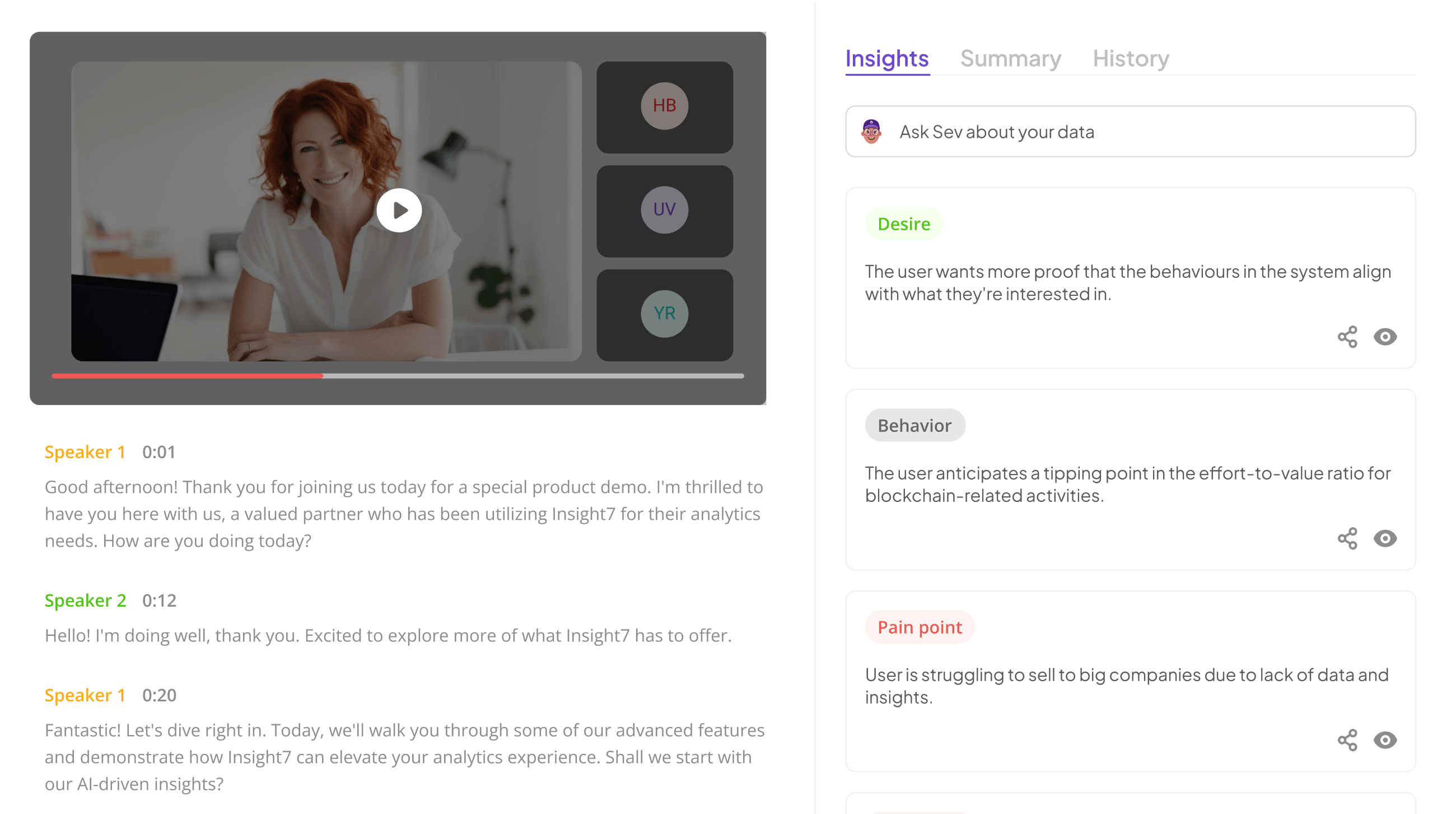5 Evaluation Flags Your QA Software Should Detect Automatically
-
Bella Williams
- 10 min read
Automated QA Metrics play a pivotal role in today's software testing landscape, transforming how organizations assess product quality. By leveraging these metrics, teams can efficiently identify potential issues before they escalate, ensuring smoother delivery cycles and enhanced user satisfaction. As the complexity of software systems grows, so does the need for robust evaluation flags that can automatically detect discrepancies in performance, security, and functionality.
Understanding these automated metrics empowers teams to focus on what matters most: delivering quality software. In this section, we will explore the crucial evaluation flags your QA software should automatically detect, allowing QA engineers to prioritize tasks and enhance overall testing accuracy. By adopting a metrics-driven approach, organizations can foster a culture of continuous improvement, aligning their testing efforts with business objectives and user expectations.
Analyze & Evaluate Calls. At Scale.

The Importance of Automated QA Metrics in Evaluation Flags
Automated QA metrics play a crucial role in software testing by providing continuous feedback on performance and quality. They simplify the evaluation process by offering consistent data that allows teams to identify potential flags quickly. By automating these metrics, QA software ensures that critical errors are detected early in the development cycle, facilitating timely corrections and reducing the cost of fixes.
Additionally, these metrics enhance the reliability of the testing process. They provide a standardized framework that can assess compliance and quality against predefined criteria. As a result, organizations can improve their overall software quality and maintain compliance standards efficiently. Embracing automated QA metrics not only fosters a proactive approach to problem detection but also supports teams in delivering superior products that meet or exceed user expectations. Thus, investing in automated QA metrics is vital for successful software development and quality assurance efforts.
Detecting Critical Errors with Automated QA Metrics
Detecting critical errors with automated QA metrics is essential for maintaining software integrity. Automated QA metrics allow teams to swiftly identify and address significant issues within their applications. By automating this process, organizations can enhance testing accuracy and reduce human error, leading to faster, more reliable product releases.
One of the primary benefits of automated QA metrics is their ability to continually monitor software performance. This proactive approach ensures that critical errors are caught early in the development cycle. Additionally, the flexibility of these metrics enables tailored configurations, allowing teams to focus on specific indicators relevant to their unique projects. Effective detection leads to improved user satisfaction and trust, ultimately resulting in a robust software product that can withstand industry demands. Intelligent tracking not only fixes existing issues but also prevents potential pitfalls, solidifying the role of automated QA metrics in modern software development.
Enhancing Reliability and Performance
To enhance reliability and performance in software testing, utilizing effective automated QA metrics is essential. These metrics provide a clear view of testing processes, helping identify issues before they escalate. By continuously monitoring performance and reliability, teams can ensure software products meet high-quality standards, reducing the risk of failure.
One effective strategy is setting up key performance indicators (KPIs) that align with your testing goals. For instance, focusing on defect density, which measures the number of bugs relative to the software size, can highlight areas needing attention. Additionally, tracking test coverage ensures that all components of the software are evaluated adequately. Another crucial metric is response time during testing, reflecting how quickly the application performs under various conditions.
By adopting these automated QA metrics, development teams can streamline processes, improve communication, and ultimately deliver a better product. Emphasizing data-driven decision-making leads to greater success and efficiency in software development projects.
Extract insights from interviews, calls, surveys and reviews for insights in minutes
Key Automated QA Metrics to Look for in QA Software
Quality assurance (QA) relies heavily on precise metrics to ensure optimal software performance. Key automated QA metrics help identify areas for improvement and guide evaluations. Metrics such as defect density, test coverage, and time to resolution offer valuable insights into the effectiveness of various testing strategies. With automated QA metrics, teams can quickly assess the health of their software, enabling prompt corrections and mitigating potential risks.
Moreover, focusing on automated metrics reinforces the importance of standardization and repeatability in testing processes. This consistency helps identify patterns over time, leading to better decision-making based on historical data. By monitoring these key metrics, organizations can gain a clearer understanding of their QA capabilities. Automated QA metrics serve not just as a performance indicator but also as a foundational element in enhancing overall software quality and reliability.
Automating the Detection of Security Vulnerabilities
Automating the detection of security vulnerabilities is a vital aspect of maintaining software integrity. With the increasing frequency and complexity of cyber threats, automated QA metrics become essential for identifying weaknesses early in the development cycle. Security vulnerabilities can manifest in various forms, including SQL injection, cross-site scripting, and buffer overflows. Thus, implementing automated detection methods allows for proactive identification of these issues, ensuring that software systems remain secure against potential attacks.
Effective QA software should not only flag potential vulnerabilities but also provide actionable insights for remedial measures. Automating this process enhances the efficiency of security assessments, reducing the likelihood of human error. Furthermore, the automated detection of vulnerabilities supports compliance with industry regulations, ultimately fostering trust with users. By integrating robust automated QA metrics into testing protocols, organizations can significantly bolster their security posture and safeguard their software products against evolving threats.
Automation for Performance Metrics and Consistency
Automated QA metrics play a pivotal role in enhancing the consistency and performance of software evaluations. By incorporating automation, organizations can swiftly identify discrepancies and anomalies in their processes, leading to remarkable improvements. Establishing specific performance benchmarks allows for faster, data-driven decisions that align with business objectives.
To ensure consistent results, QA tools must automatically flag critical metrics such as response time, error rates, user satisfaction, and compliance with specifications. Each data point feeds into an overarching framework, aiding in troubleshooting and quality assurance. By automating these metrics, teams not only save valuable time but also enhance their ability to produce reliable outcomes aligned with user expectations. Ultimately, this leads to a more robust software ecosystem, where quality is measured systematically and consistently, supporting continuous improvement endeavors in the development lifecycle.
Recommended Tools for Effective Automated QA Metrics Detection
To effectively detect automated QA metrics, selecting the right tools is crucial. Various software solutions can streamline the evaluation of key flags in your QA processes. Among these, Selenium stands out as a powerful open-source tool that automates web applications for testing purposes. This platform allows teams to write tests in various programming languages, enhancing flexibility and compatibility.
In addition to Selenium, consider using TestRail for test case management. This tool helps teams track and manage test cases and results efficiently, ensuring thorough evaluation of automated QA metrics. PractiTest and Zephyr are also excellent choices, offering comprehensive analytics and reporting features, which enable effective decision-making. By leveraging these tools diligently, organizations can significantly enhance the accuracy and efficiency of their QA metrics detection processes, ultimately leading to improved software quality.
insight7
Automated QA metrics play a critical role in identifying evaluation flags within software development processes. These metrics enable teams to detect anomalies that may indicate deeper issues, helping maintain quality and reliability in software. By automating this detection, organizations streamline their quality assurance workflows and enhance their ability to address potential risks before they escalate.
One of the most significant flags to monitor is the frequency of critical errors that recur in different builds. This repetition signals that some fundamental issues remain unresolved. Another vital metric is test coverage, ensuring that a substantial portion of the application is validated through automated testing. Furthermore, response times during testing can provide clues about performance bottlenecks, making it essential to track through automated metrics. As teams leverage these automated QA metrics, they gain insights that not only optimize their testing processes but also drive business decisions and improve overall customer satisfaction.
Selenium
Selenium stands out as one of the most powerful tools in the realm of Automated QA Metrics, particularly for web application testing. It enables automated testing across different browsers and platforms, ensuring that applications perform consistently, regardless of the environment. This flexibility allows testers to simulate user interactions and verify that their web applications behave as intended. By automating these processes, Selenium helps teams catch critical errors early in the development cycle.
One of the significant advantages of using Selenium is its integration with various programming languages and frameworks, making it accessible to a diverse range of development teams. Automated QA Metrics generated through Selenium can identify issues such as performance bottlenecks or security vulnerabilities, providing valuable insights. Furthermore, as automation tools evolve, Selenium continues to enhance its capabilities, empowering teams to deliver high-quality software more efficiently. By implementing Selenium, teams can achieve a smoother testing experience and foster collaboration among developers, ultimately leading to improved software reliability.
TestRail
TestRail serves as an invaluable tool in managing test cases, tracking results, and generating insightful reports within the realm of automated QA metrics. The platform allows QA teams to organize their testing efforts effectively, ensuring that they can run comprehensive evaluations at scale. By automating the collection and analysis of test results, TestRail empowers teams to focus on technical execution rather than manual processes. This leads to improved efficiency and increased accuracy in the evaluation flags detected.
In the context of automated QA metrics, TestRail seamlessly integrates with various testing tools and frameworks, enhancing overall data visibility. This synergy provides organizations with real-time insights into quality assurance processes, allowing them to identify issues more quickly and target areas needing attention. Furthermore, TestRail’s robust reporting features enable teams to analyze trends over time, ensuring that quality practices continuously evolve. By utilizing TestRail, organizations can enhance their testing strategies and ultimately improve software quality.
PractiTest
Automated QA Metrics serve as vital indicators in your quality assurance process. Understanding how these metrics work can transform the way you evaluate software performance. A key aspect of effective QA software is its ability to automatically flag critical errors. By implementing automated evaluation flags, teams can swiftly detect issues that might otherwise go unnoticed during routine testing.
PractiTest exemplifies a robust solution in this context. It seamlessly integrates with existing workflows to enhance the accuracy of evaluations. With customizable templates, it allows QA teams to establish criteria for assessing calls or interactions. The automated detection capabilities ensure that vital areas, such as customer engagement and issue resolution, are thoroughly evaluated, providing valuable insights into software quality. This efficiency ultimately leads to quicker turnaround times for project feedback, allowing teams to focus on what matters most—delivering a superior product to users.
Zephyr
In the realm of quality assurance, Zephyr stands as a vital ally for teams committed to excellence through automated QA metrics. By automating the detection process, Zephyr helps identify critical flags that might be overlooked in manual testing scenarios. This automation transforms the quality assurance workflow, enabling teams to concentrate on enhancing their product rather than getting bogged down by repetitive tasks.
Understanding how Zephyr integrates into the automated QA metrics landscape is crucial. It effectively captures security vulnerabilities, performance issues, and compliance gaps in real-time. This real-time analysis not only enhances reliability but also ensures that your software meets the highest standards before deployment. With Zephyr, QA professionals can ensure a robust testing protocol tailored to their specific requirements, ultimately fostering a culture of continuous improvement and reliability in software deliverables.
Conclusion: Harnessing Automated QA Metrics for Superior Software Quality
Automated QA metrics play a crucial role in elevating software quality. By efficiently capturing essential evaluation flags, teams can proactively address issues, ensuring a smoother user experience. Integrating these metrics allows for continuous monitoring, enhancing reliability while significantly reducing manual effort.
Moreover, leveraging automated QA metrics empowers teams to identify areas for improvement at every stage of the development lifecycle. This approach not only streamlines the testing process but also fosters a culture of quality and accountability. In conclusion, harnessing these metrics can transform your software development practices, ultimately leading to superior software quality.







